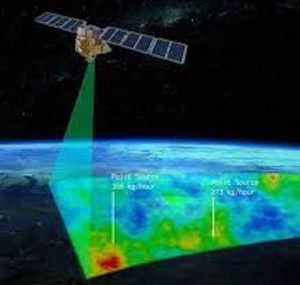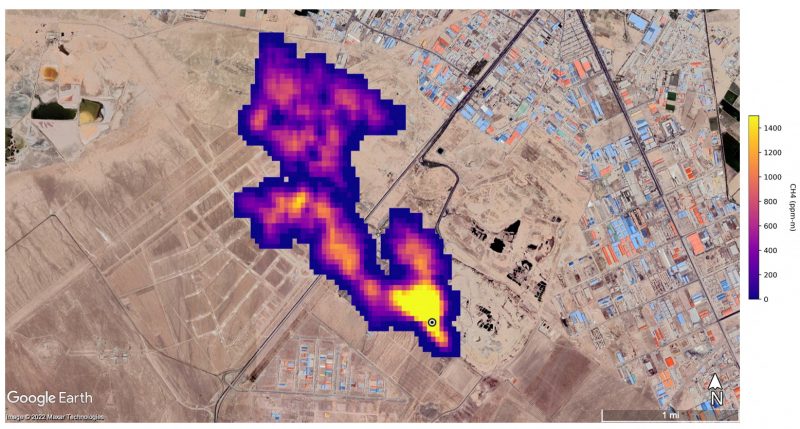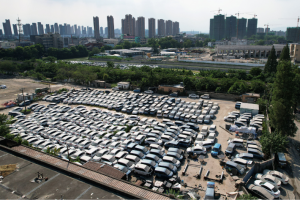Just a few weeks after the hottest year and the warmest January ever recorded, it’s hardly surprising that scientists and environmental groups are focusing intensely on countering the causes of global warming.
The threat from methane – one of the most potent greenhouse gases – is set to get far greater public attention.
Google is partnering with the Environmental Defense Fund (EDF), a non-profit organization, with a plan to launch a satellite next month that uses Google’s AI system to measure methane leaks.
The plan is to quantify, map, and reduce leaks – to provide the most detailed portrait possible of the world’s methane emissions, to identify where the worst sites are and try to contain them.
ALSO SEE: Red Sea Crisis Hurting Indian Exporters As Rivals Nab Business
Regulators in the US and other countries are pushing for stronger rules to curb methane, which is estimated to cause about a third of the warming caused by greenhouse gases.
The satellite, known as MethaneSAT, has software and instruments called spectrometers to help detect the invisible gas and pinpoint sites with concentrated methane plumes, as well as broader areas where the gas emerges and spreads.
It will use image detection algorithms created by Google to generate a comprehensive global map of the oil and gas industry’s infrastructure, that includes oil pump jacks and storage tanks, where leaks often occur.
Efforts to measure methane leaks has previously been expensive because it required field studies with airplanes and handheld infra-red cameras. And the findings of just a brief snapshot in time often took a long time to emerge.
That is why some analysts believe the satellite will be an invaluable tool – because there are a vast number of oil and gas operations around the world, and information about them is sometimes tightly guarded and can be tricky to access.
Several other satellites, and even the International Space Station, have been used to monitor methane emissions.
But methane not only emerges from oil and gas sites, plus coal mines. It also comes from landfill waste dumps, particularly in South Asia.
The Guardian said on Monday that new data showed that 1,256 methane super-emitter events occurred between January 2019 and June 2023. “Pakistan, India and Bangladesh lead the list of nations with the most large leaks, followed by Argentina, Uzbekistan and Spain,” it said.

MethaneSat
MethaneSat is a project led by EDF, the New Zealand Space Agency, Harvard University and others. Data from the satellite will be available later this year, and Google Cloud will provide the computing capabilities to process the information.
Google also said it will create a map of oil and gas infrastructure, using artificial intelligence to identify components like oil tanks. MethaneSAT’s data on emissions will then be overlayed with the Google map to assist in understanding which types of oil and gas equipment tend to leak most.
The information will be available through Google Earth Engine, a geospatial analysis platform, later this year. Earth Engine is free to researchers, nonprofits and the news media.
“We think this information is incredibly valuable for energy companies, researchers and the public sector to anticipate and mitigate methane emissions in components that are generally most susceptible,” Yael Maguire, vice president of geo sustainability at Google, said on a call with reporters.
The launch comes as over 50 major state-owned and independent oil and gas operators ranging from ExxonMobil to Saudi Aramco have pledged at the COP28 climate summit to reduce their methane leaks to near zero by the end of this decade.
The United States is among the biggest methane-emitting countries, and has proposed mandatory measures to stem leaks from oil and gas operations. A new rule by the US Environmental Protection Agency would allow the public to report large methane leaks to federal regulators if they have access to methane detection technology.
- Jim Pollard with Reuters
ALSO SEE:
World Backs COP28 Deal to Reduce Use of Fossil Fuels
US Keen to Help China on Deal to Curb Methane Emissions
COP Battle Over ‘Weak’ Draft, Row Over Ending Fossil Fuels
Push for Phase-Out of Fossil Fuels on the Table at COP28
COP28: Over 110 Nations Join Deal to Triple Renewable Energy
US Pledges $3 Billion for Green Climate Fund at COP28
Cities Lead COP28 Climate Change Push as Nations Fail to Deliver























